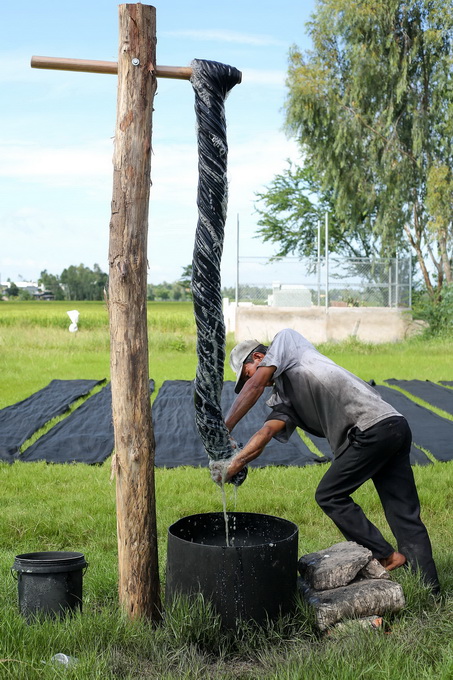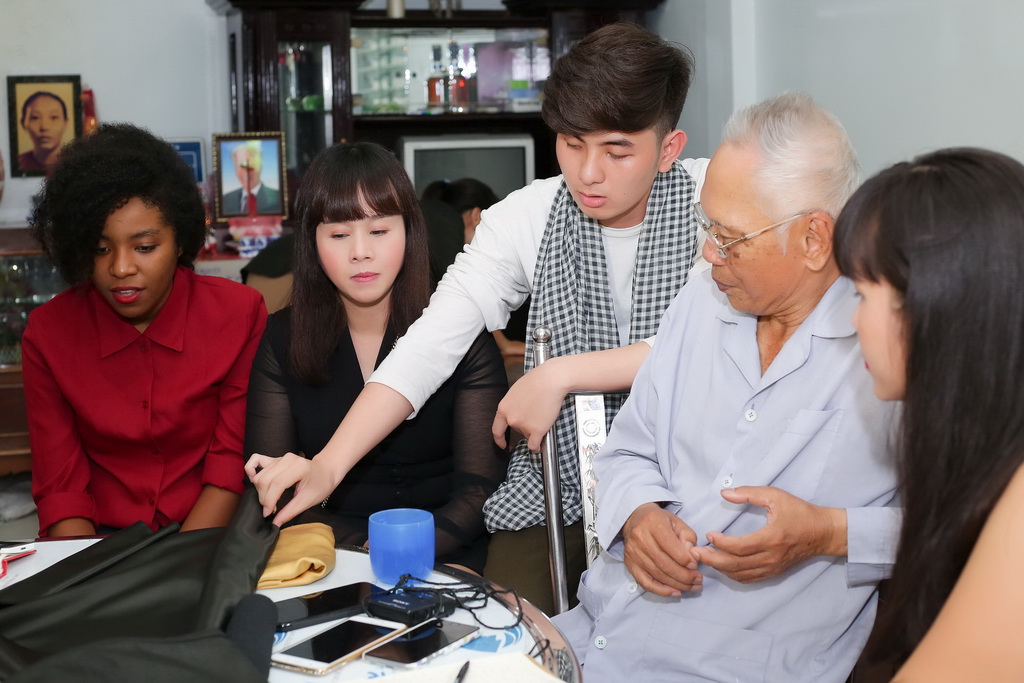A group of young Vietnamese fashion designers are attempting to revive interest in ‘lanh My A’ – a type of lacquer silk from southern An Giang Province – that has been on the brink of oblivion.
The lacquer silk, known for its jet-black color, luxurious shine and durability, has seen its popularity shrink due to a shortage of craftsmen and raw materials.
A craft under threat
The process of making My A lacquer silk begins with harvesting the fruit of the ‘mac nua’ (diospyros mollis) plant, the sap of which can be used to dye the silk black.
Between 80 and 100 kilograms is required to dye a 20 meters by 90 centimeters roll of the lacquer silk, according to Nguyen Van Long, an experienced artisan from Tan Chau silk village in An Giang.
However, because of their low economic value, the mac nua forests have shrunk in recent years, to the point of threatening to cut off supply completely of the material crucial to local craftsmen, said Nguyen Huu Tri, one of Long’s sons.
Harvested mac nua fruits are ground into a fine powder and added to water to create a black liquid.
“It could take four months to finish 500 meters of My A lacquer silk, including two months to dye and another two to weave,” Long said. “During the rainy season, the dying process alone can take up to four months.”
The fabric is made from the finest silk threads from the plateaus of Bao Loc Province in the Central Highlands, with each roll of lacquer silk containing up to 12,550 warps.
A documentary showing the process of making My A lacquer silk. Clip: Youtube/Hanoia
According to Long, the fall in popularity of lacquer silk has been due to the introduction of industrially woven silk, which is both cheaper and easier to dye and comes in a range of colors outside the traditional black.
The growing tendency for today’s lacquer silk weavers to turn their back on the traditional craft has pushed the art to the brink of extinction, Long said.
Out of his 20 children, only Tri had chosen to follow in his father’s footsteps and keep the family business going.
“The only reason my family has been able to keep the craft alive is regular purchase orders from a customer in France,” Long explained.
The Dreamers
Refusing to allow their favorite fabric to fall into oblivion, four young Vietnamese fashion designers have travelled all the way to Tan Chau silk village to explore their craft, with a view to making the material popular again.
They have scheduled the lacquer silk to appear on the catwalk of a fashion show in October called ‘The Dreamers’, which will showcase 75 different designs made from the material.
“The four of us have spent the larger part of the last few months working in our studio to test different designs and sewing techniques to bring out the best of My A lacquer silk,” said designer Nguyen Minh Cong.
Cong made it to the Top 5 of the 2014 season of Project Runway Vietnam, a local adaptation of the American reality television series for aspiring fashion designers.
Apart from Cong, the three other members of the team are all newcomers to the fashion world, having gained recognition for their works in the music industry and beauty pageants.
“After learing how arduous the process of making the lacquer silk is, we have learnt to cherish every piece that we work on,” Cong said. “We don’t throw away even the smallest piece of leftover fabric, as it can be used to decorate outfits or make accessories.”
According to the designers, one of the 75 designs will be selected as the national dress for Vietnam’s representative in the upcoming Miss Earth 2017 beauty pageant in November.
 |
| Dang Van Nhanh, one of only three lacquer silk dyers left in Tan Chau silk village in An Giang Province, squeezes a piece of silk after soaking it in a black fluid made from the mac nua fruit. This manual work must be repeated hundreds of times over the course of two months to give the silk its shiny, jet-black look. Photo: Tuoi Tre |
Like us on Facebook or follow us on Twitter to get the latest news about Vietnam!


















































